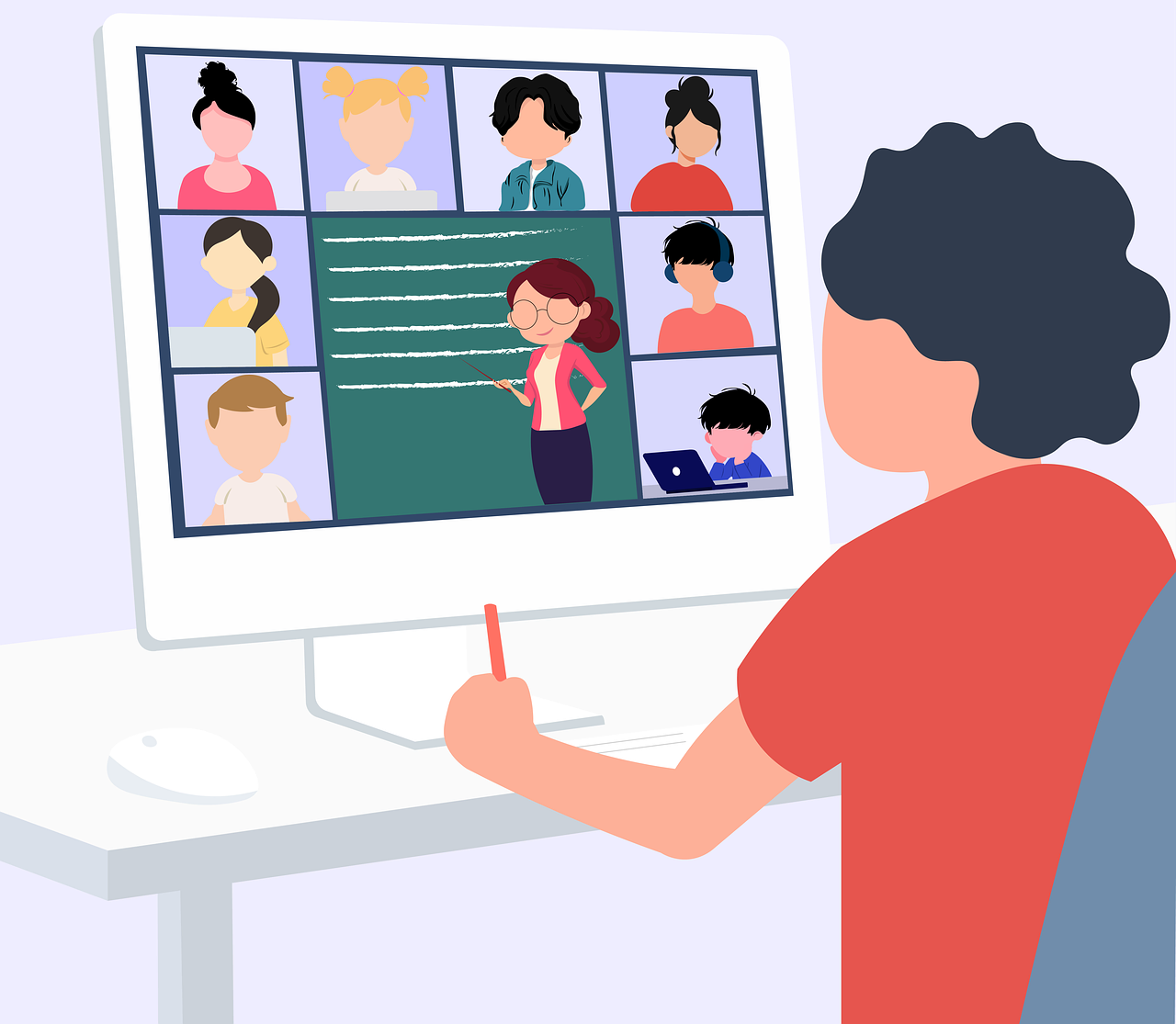Pros and Cons of Online Learning for Teachers and Students
Online learning seems to be the most common phrase currently referred to in education. This article will let you know 8 pros and cons of online learning for teachers as well as students.
Globally, the COVID-19 crisis has had a profound impact on the economy and education. It brings significant changes to every corner, every single aspect of human lives. Because of the lockdown, students and teachers switched to virtual classes rather than face-to-face ones. As a result of the pandemic, online learning has become the most effective way to keep education going. At this time, the learning process is performed through online learning platforms. For example, Zoom, Microsoft Teams, Google Meetings, and so on. This learning style is the current educational trend. In the rest of today’s blog, let’s explore the 8 pros and cons of online learning for both students and teachers.

First of all, take a look at the table below. It gives an overview of the pros and cons of online learning.
Now, read on and learn more.
Concerned about student engagement and effective assessment in online learning? ActivePresenter, an all-in-one authoring software, provides tools for creating interactive quizzes, simulations, and engaging video lessons to address these challenges head-on. Learn how ActivePresenter can help you create more effective online learning environments!
Benefits of Online Learning
#1. Offer Flexibility
As we know, the major benefit of online education is its flexibility. Teachers and students can start the lesson wherever they are. While in traditional classes, they can convey and collect knowledge in classrooms only. In fact, online learning offers teachers and students freedom. Since they can teach and learn in their most comfortable situation. In addition, this learning type saves them a ton of time instead of rushing hours or jostling on public transport every day.

#2. Improve Technology Skills
Teaching and studying online improve technology for both teachers and students. In the past, teachers from the countryside didn’t get accustomed to smart devices. But now, they can make use of technology to create engaging learning content. Thanks to that, online lessons have become much more appealing. Simultaneously, it enhances learning experiences for students as well. Further, with small students, online learning promotes fluency in keyboarding skills to serve long-term learning.
#3. Reduce School Anxiety
In this modern life, there are so many mental health issues that arise in school. Especially, school anxiety. So, what leads to school anxiety? There are many reasons to make it happen. It may come from appearances, conflicts, and dissatisfaction in relationships. When at home without direct interactions, people may feel safe and more restful. Obviously, if we are in a good mood, we can do everything better.

#4. Avoid Passing Answers Along While Doing Test
Looking back to the face-to-face classes. Teachers are supervisors in exams these days. Despite the strict supervisors, students still can cheat somehow. At present, with the help of technology, teachers can provide students with online tests and assess them effectively. Randomized questions prevent students from passing answers along. Plus, some online tools with AI features allow capturing students’ screens in seconds. It comes in handy to avoid any kind of cheating during online exams.
Drawbacks of Online Learning
So, this type of learning brings us many amazing upsides. No one can deny these things. But, all things have two sides, including online learning.
It’s time to take an in-depth look at the downsides of online education in the next parts.
#1. Limit Social-emotional Interactions
During the Coronavirus outbreak, many schools are closed. Though online learning is a great solution, it doesn’t provide entirely social-emotional learning with real interactions. Many teachers admit that teaching online reduces their energy. And they are stuck in the way of engaging students. For students, they don’t have many chances to connect with their classmates and teachers. Low interactions and communication for a long time may lead to isolation.

#2. Lack of Basic Conditions
Before implementing teaching and learning online, make sure that you have two basic conditions. Firstly, technological requirements. And secondly, steady internet connection. Without them, you cannot attend online classes. But, not all people have enough conditions. This kind of learning puts pressure on some groups of people. Especially lower-income families or people in remote areas.
#3. Needs Family Member’s Support
Online learning is different from homeschooling. But family members have to spend a lot of time supporting their children. It’s hard for small students to connect to online learning platforms themselves or to prevent themselves from short attention spans. Sometimes, they cannot solve computer problems. So, to make the online education process take place well, support from others is needed. This affects family members’ work somehow.

#4. Increase Some Physical Health Issues
Finally, teaching and studying online raises some physical health issues. Imagine that you keep your eyes on the computer screens all day long and day by day. You work with technology devices not only in-class time but also after that. Thus, you may get neck and shoulder stiffness, back pain, and obesity. Besides, headaches, hearing loss, or even myopia are no exceptions.
Final Words
That’s all about the pros and cons of online learning. In spite of some cons, this learning style is still a crucial solution to maintaining education. And if you are finding a useful tool to create impressive eLearning lessons, try out ActivePresenter. The app offers 11 interactive question types and many amazing features. All will help you unleash your creativity in online learning tasks. Feel free to contact us if you want to share any ideas or questions. Have a great day!
See more: